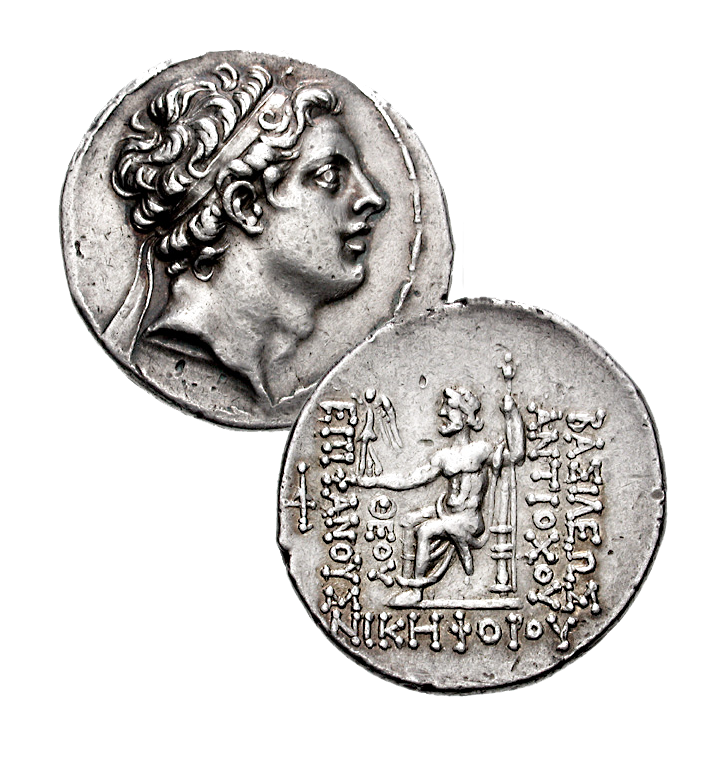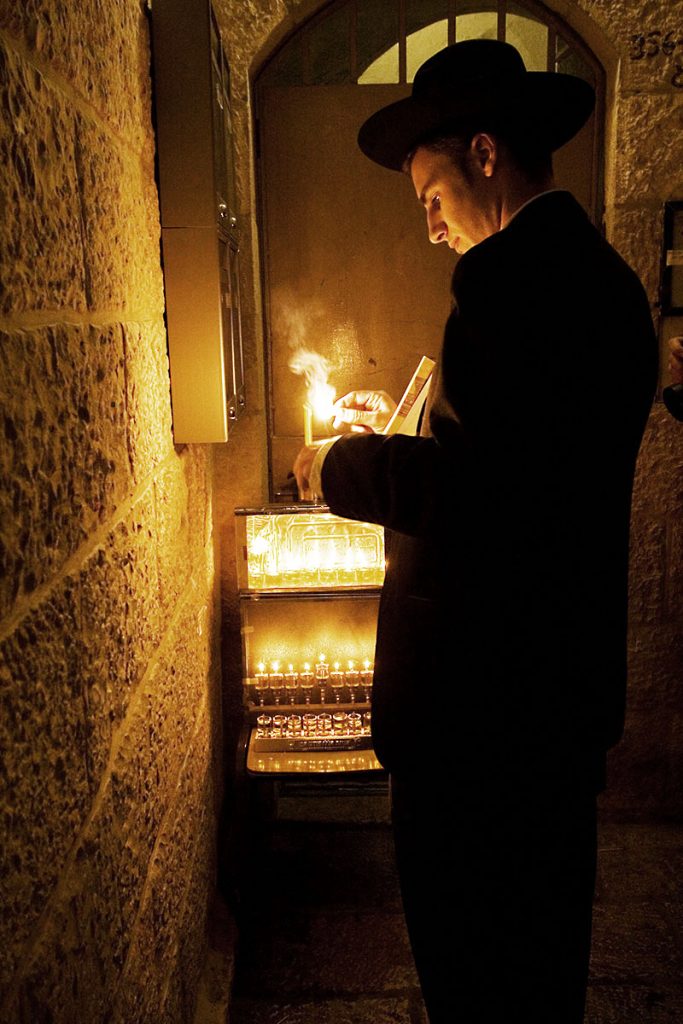
Bible, History, Archaeology
Bible,
History,
Archaeology
Hanukkah,
festival of light
Hanukkah is a historical event known as the Feast of Inauguration or Dedication (which is what the word means in Hebrew), Hanukkâh), as the Jews commemorate the Dedication of the Temple of Jerusalem, sacked and rendered meaningless in 165 BC, after its desecration by the Seleucids. The feast commemorates the Maccabees' victory over the armies of Antiochus IV Epiphanes of Syria, who wanted to Hellenize Judea and forbid Jews to worship there.
 Historical background
Historical background
After the death of Alexander the Great in 323 BC, Judea came under the control of the Lagids of Egypt and became part of the province of Coele-Syria. This marked the beginning of a period of encounter between Judaism and Greek culture, both in Judea and in the Diaspora. At the end of the fifth «Syrian War», around 201 B.C., Antiochus III took control of Judea; but in 188, the Seleucids, trying to impose themselves on Roman expansion in Greece and Macedonia, were defeated and had to pay very heavy war indemnities to Rome, spread over twelve years. This situation led Antiochus IV Epiphanes to increase taxation in Judea, forcing the high priest, appointed by the Seleucid powers to draw from the Temple treasury. At that time, the High Priest was a person of prime importance, empowered to draw money from the Temple treasury.
In this case, the Maccabean revolt (167-142) was both a revolt of pious Jews against the Greek Seleucid dynasty and an internal conflict between traditionalists hostile to the evolution of Jewish tradition in contact with Greek culture and Hellenizing Jews more favorable to cultural mixing.
Image opposite: Hanukkah celebrates the victory of light over darkness in Jerusalem's Orthodox Jewish quarter.
Today, a glass box is displayed in front of the Jewish home, and every evening for eight days, a candle is lit. © Dany Yanai.
The leaders of this revolt were the priest Mattathias, who refused to make a pagan sacrifice, and his sons, notably Simon, who became the political leader of the revolt, while Judas, nicknamed «Maccabaeus», was its military leader (1 Maccabaeus 2).
Some Jewish historians believe that the story of Judith killing the Assyrian general Holofernes after breaking into his camp to seduce and then murder him (see the deuterocanonical book of Judith) is said to have been the trigger for the Maccabean uprising, which lasted for over twenty years.
 Image opposite: Hasmonean Jewish coinage (obverse and reverse), attributed to John Hyrcan I (135 to 104 BC). Yehochanan hakohen hagadol rosh haver yehudim, «Yehochanan the high priest and first of the assembly of the Jews», son and successor of Simon Maccabaeus, King High Priest.
Image opposite: Hasmonean Jewish coinage (obverse and reverse), attributed to John Hyrcan I (135 to 104 BC). Yehochanan hakohen hagadol rosh haver yehudim, «Yehochanan the high priest and first of the assembly of the Jews», son and successor of Simon Maccabaeus, King High Priest.
The state of Judea had just gained independence, and the political and cultural role of John Hyrcan I was very important. Faces are never depicted on Jewish coins. Israel Museum, Jerusalem.
The party
After their victory, the Maccabees moved to the Jerusalem Temple to purify it from the stains of the sacrifices imposed by Antiochos IV; they lit the menorah (the seven-branched candelabrum) with the only vial of consecrated oil in their possession (legend, tradition?). It should have lasted only one day, but it would have kept the menorah lit for eight days, the time it took to make new holy oil.. It is this miracle that the Jewish masters retained above all from this episode, which places this feast under the sign of the victory of light over darkness. It also represents the victory of religious freedom over paganism (1 Maccabaeus 4, 36-61).
According to Armand Abécassis, this festival also has a messianic dimension: « The number 7 gives rhythm to the week here below, while the number 8 evokes the overcoming of this rhythm for a beyond of reality. »It's the Messiah's. « This eighth messianic day should enlighten all free and responsible peoples of peace and justice. ».
 How is this holiday celebrated?
How is this holiday celebrated?
Hanukkah falls on the 25th of the month of Kislev, which in the Jewish calendar marks the winter solstice, when the days are shortest and the nights longest (a direct allusion to this can be found in the’Gospel of John in chapter 10,22). It lasts eight days: on the first evening, after reciting a blessing to thank God for the miracle, the father of the family lights the first light on the nine-branched menorah placed near a window, and continues in this way, with an additional light each evening, until the eighth day. The ninth branch of the candlestick is used to position the candle (called the Shamash, «servant») that lights the other eight.
Image opposite: the 8+1-branch Hanukkah candelabra. Public domain.

Coin bearing the effigy of Antiochus IV Epiphanes.
He was a bitter opponent of the Jews.
Obverse :
His face, right.
Revers :
ΘΕΟΥ ΕΠΙΦΑΝΟΥΣ ΝΙΚΗΦΟΡΟΥ / ΒΑΣΙΛΕΩΣ ΑΝΤΙΟΧΟΥ :
«King Antiochos, revealed god, bringer of victory».». © cgb.

 Historical background
Historical background Image opposite: Hasmonean Jewish coinage (obverse and reverse), attributed to John Hyrcan I (135 to 104 BC).
Image opposite: Hasmonean Jewish coinage (obverse and reverse), attributed to John Hyrcan I (135 to 104 BC).  How is this holiday celebrated?
How is this holiday celebrated?